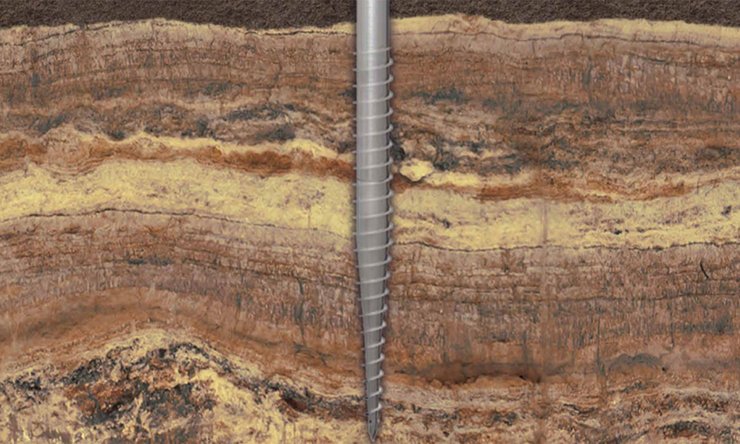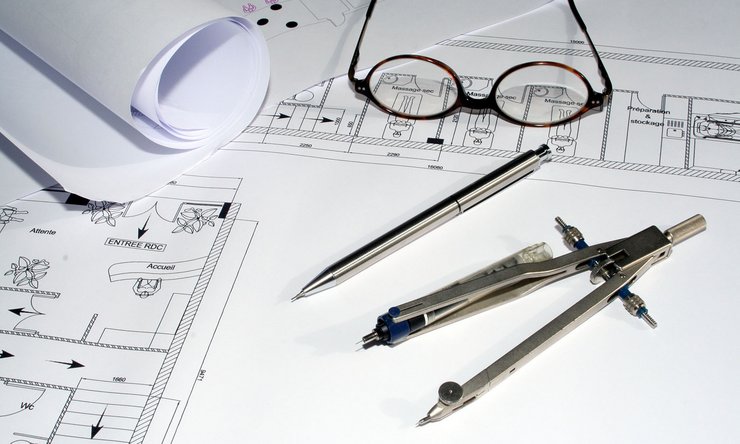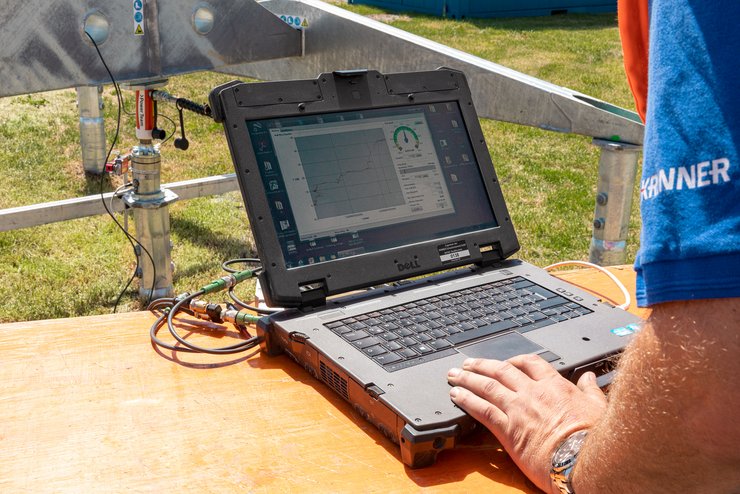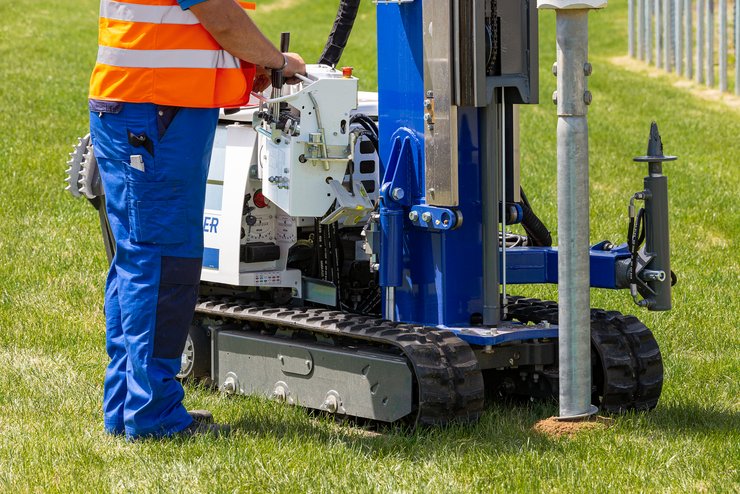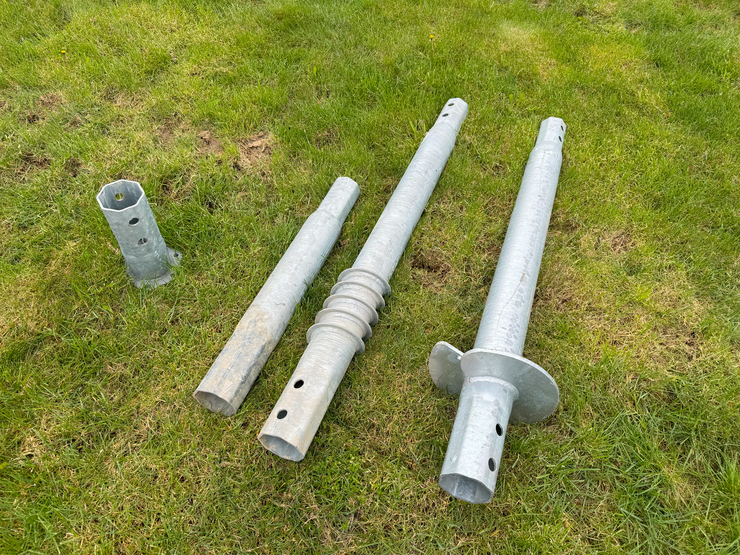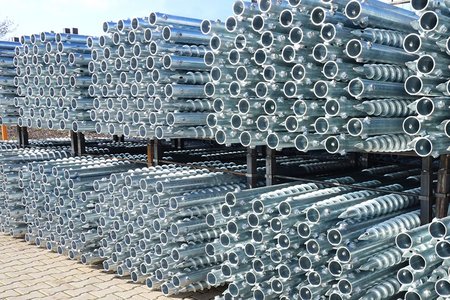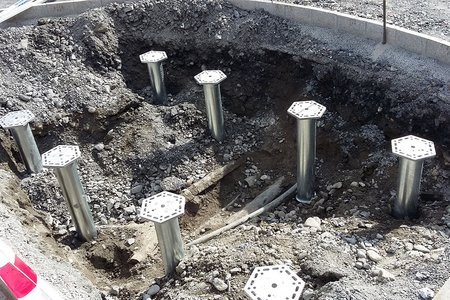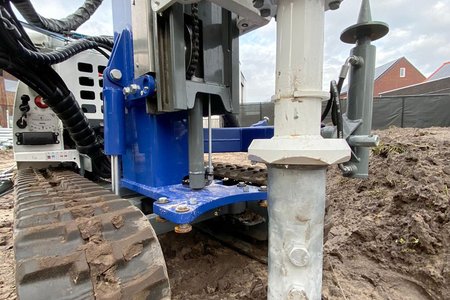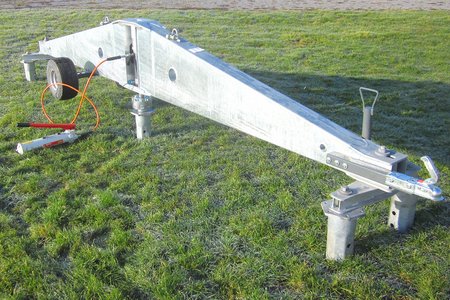Project process for a foundation construction with ground screws
Building a foundation with ground screws looks easy, and it is if you follow the individual steps. The project process for a foundation construction with ground screws always follows a similar pattern and is split into multiple process steps.
1. Subsoil evaluation
1. Subsoil evaluation
Before any construction project can start, a geological subsoil survey must be performed by a geotechnical engineer. This step must always be performed regardless of the type of foundation. The so-called “soil survey” provides information about the composition of the soil and can tell you whether it is a suitable subsoil or not. This information is obtained through boring and probing. Alongside the evaluation of the load-bearing capacity of the soil, the layer structure is also analysed and the groundwater behaviour evaluated. With a foundation construction with ground screws it is also necessary to investigate the aggressiveness of the soil in order to obtain a corrosion evaluation and therefore estimate how long the product can remain in the soil for without getting damaged. Finally, you need to check to see if the foundation will have an impact on any neighbouring buildings.
2. Foundation planning
2. Foundation planning
With the geological survey, the load data from the object planning and the system structural analysis, you can now start the static planning of the foundation. The suitable ground screw type is determined and the number of ground screws needed is decided upon during the planning.
3. Load-bearing capacity test
3. Load-bearing capacity test
The load-bearing capacity tests are used to check and confirm the estimates from the static planning with regards to the structural design in practice. They are also used to determine the installation parameters such as the minimum torque, for example. The load bearing tests are done using a test apparatus with a load cell and a tension-compression fatigue test in the direction of the load application, so vertical and/or horizontal, is also performed. Important: Before the load-bearing capacity test begins, approvals from the bomb disposal team and plans for underground cables must be obtained where needed.
4. Installation and documentation
4. Installation and documentation
After the report for the load-bearing capacity tests has been compiled, it must be checked, modified and approved by a structural engineer and only then the installation process can begin. First of all, the ground screw positions must be determined and then the ground screws can be installed by an expert machine operator with an electric or hydraulic KRINNER ground screw driver. During this process, the torque at the ground screw positions must be recorded and documented as evidence. The installation times are very short and loads can be placed on the foundations immediately after their installation. This means that the total construction time can be greatly reduced.
5. Dismantling the construction
5. Dismantling the construction
If a construction project is only intended to be used for a short period of time, then dismantling it should also be made easy. The KRINNER ground screws can be easily unscrewed and removed. It is also possible to use the ground screws again. However, before reusing them, you need to check that the product hasn’t been damaged. A ground screw can only be used again if not damaged. If it is damaged it can be recycled and therefore disposed of in a sustainable way. After the ground screws have been unscrewed and removed the building site can be returned to its original state.
When compared to the process for installing a concrete foundation, the process steps for installing a ground screw foundation are similar but the whole installation process is significantly more efficient and faster. This means that the ground screws are definitely a viable alternative to more traditional foundation solutions.

